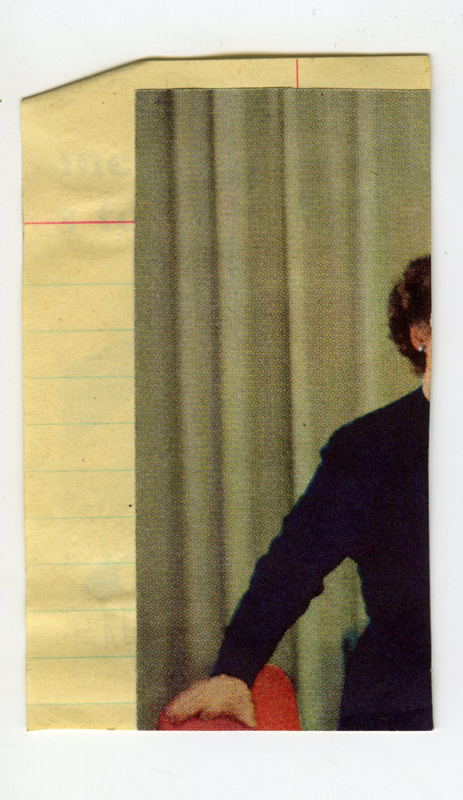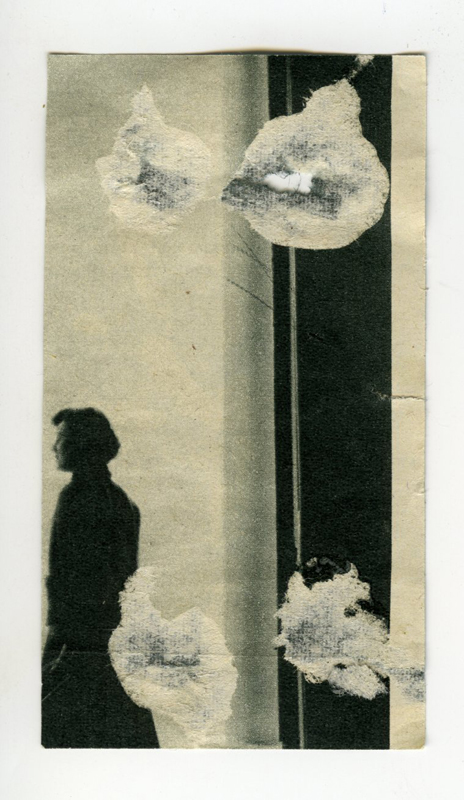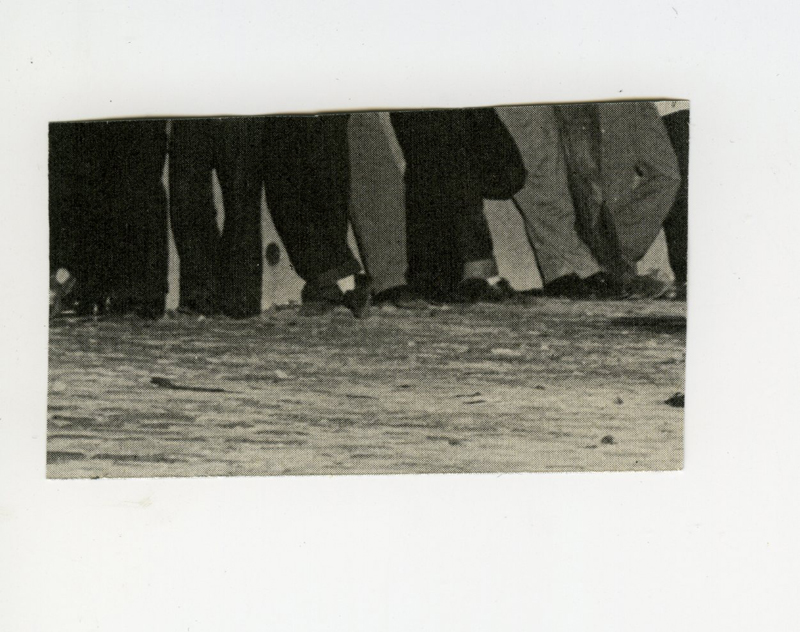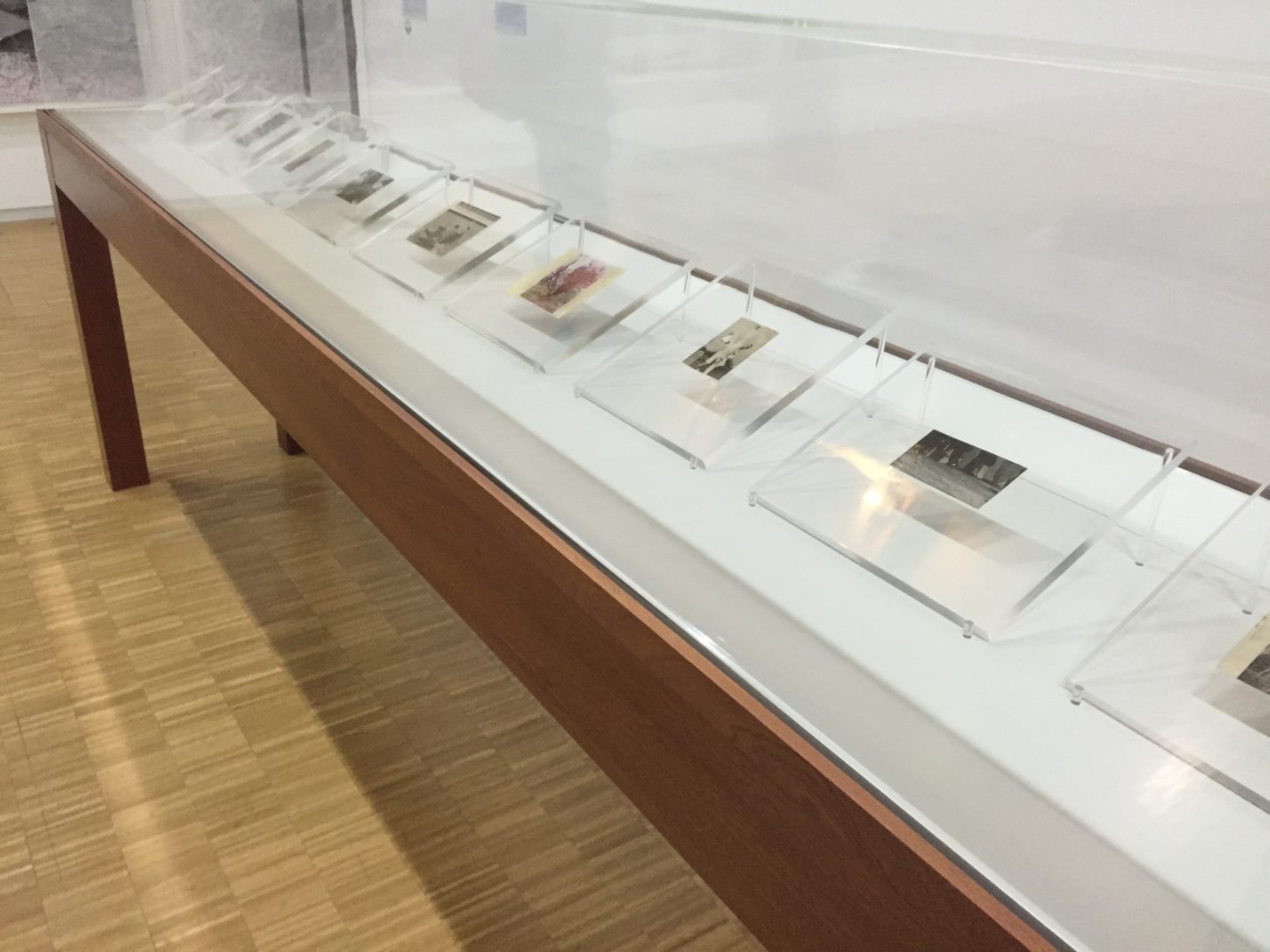Clare Strand, artist
10 Least Most Wanted, 2011
10 Least Most Wanted is comprised of ten vernacular images displayed in a custom-built, free-standing museum cabinet.
Now held in the Centre Pompidou collection, it was last exhibited in
Since being a teenager, and with an amount of ambivalence, I have cut and paste images into scrapbooks. In 2010, after my second daughter was born, I returned to my early scrapbooks and set myself the task of cutting my ‘ten most wanted’ images from the collection.
I made a layout on my kitchen table and felt content enough with my choice. The next day I came back and turned one of the images over. I then turned the rest and eventually realised that I preferred what was on their reverse. The final series thus became 10 Least Most Wanted. It is the unchosen, serendipitous image, sometimes a mere fragment that became the exhibited material.
In exhibition the 10 Least Most Wanted images are encapsulated in thick acrylic panels and presented on a slight gradient. The 10 least Most Wanted are given priority, however if you want to see the ‘most wanted’ you can walk around the back of the cabinet, bend down, crane your neck and peek in. For me the 10 Least Most Wanted work is a perfect example of my creative process. With just a flick of the wrist, it expresses that moment of chance, happenstance, luck and creativity. An outcome pitched somewhere between intention, accident and realisation. It also elevates my teenage scraps of paper into museum artworks.
On which fields of knowledge are you focused?
The uses and distribution of the photographic image and conceptual art.
What is the object of your research?
Artistic output.
Could you identify some constants in your work?
Photography’s role in the distribution and consequent misinterpretation of information i.e. image entropy.
How did you find out about Aby Warburg‘s work?
Through reading about Walter Benjamin.
What interest you the most?
The disrespect for boundaries.
The even treatment of the ‘inconsequential’ and the ‘significant’.
The attempt to bring chaos into order and order into chaos.
The effort to employ images and visual montages as a communicative medium.
The interdisciplinary approach to working.
The connection between mental health and creativity.
How would you define an Atlas?
A large book containing images and texts pertaining to the surface of the earth, planet or moon.
Atlas as a conceptual, formal and mnemonic device; do you use it in your work?
When I was young I scrapped booked – now I have messy shelves and folders.
Do you know about the existence of Mnemotechnics?
I do now! Thank you.
Which mnemonic system guides the organization of your material?
Intuition, mind maps and a chaotic desktop.
Are there visual and emotional formulas (pathosformel) in your project?
Yes.
In your work, do you identify formal or conceptual recurrences such as repetitions and disruption, distance and proximity, identity and migration, conflict and colonization?
I think all my work could be described as disruptive.
In your work, what is the balance between image and text?
It depends on the work. But in general I would say 83% images and 17% text.
Thinking about Warburg’s “good neighborhood rule”, what are the books that underpin your project?
Eugène Ionesco, The Killer, and Other Plays, 1960 Grove Press
Will Goldston, Simple Conjuring Tricks That Anybody can Perform, London 1915
What Is a Machine? Collins Pagent of Knowledge Series., 1963
Charles Fort , Wild Talents, 1932
Tony Smith, Family Doctor, GUILD PUBLISHING 1987
Are there more topics of interest that we haven’t pinned down?
It would be interesting to know if any women operated in a similar way during this era.
Clare Strand is a British conceptual artist, working with and against the photographic medium. Over the past two decades she has worked with found imagery, kinetic machinery, web programmes, fairground attractions and most recently, large scale paintings. She rejects the subject-based qualities and the immediate demand of information, so often associated with the photographic image and instead, and without apology, adopts and welcomes a subtle, slow burn approach.





